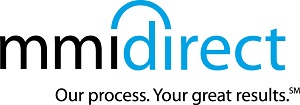In the search for new donors, direct mailers often rent lists of people who have donated to similar organizations. Names that appear on more than one acquisition list are called Multi-Buyers.
Because these individuals have contributed to multiple organizations, multi-buyers tend to perform better than those who appear on only one acquisition list. Therefore, you should give special thought to how best to cultivate these individuals.
If you’re working with a modeling organization, you can take advantage of their massive database to identify the optimum ask string for each person. Since donors have a tendency to continue donating at a given level, you should aim for a first donation that is towards the higher end of what this person’s giving history indicates they’re comfortable donating.
One of the magical things about multi-buyers is that, depending upon your pricing arrangement with the list owners, you may already own the right to contact them again. For example, if you’ve paid for all non-suppressed names on each list and you have a record that occurred on two different lists, you’ve paid for this 2-time multi-buyer twice. As a result, you have the right to mail them a second time. Similarly, you can send a third mailing to a 3-time multi-buyer who appears on three of your acquisition lists.
For these additional mailings, you might want to address a second mailing to a different member of the household. For example, if John Smith and Mary Smith appear on multiple acquisition lists at the same address, you might choose to send the second mailing to the spouse of the person you mailed the first solicitation to.
Want some help cultivating your multi-buyers? Our experts have been optimizing direct mail lists for decades, and we’d love to tackle yours. Please call John Bell at (310) 372-9010 or let us know when you would like us to call you.
Want more than a cookie cutter approach? MMI Direct dives deep into your data
to determine how best to optimize your list and maximize your direct mail ROI.









 Whether you want to take a DIY approach to prospect research or seek the assistance of a tool, your nonprofit stands to gain from learning more about your donors. And that’s what prospect research enables you to do!
Whether you want to take a DIY approach to prospect research or seek the assistance of a tool, your nonprofit stands to gain from learning more about your donors. And that’s what prospect research enables you to do!





